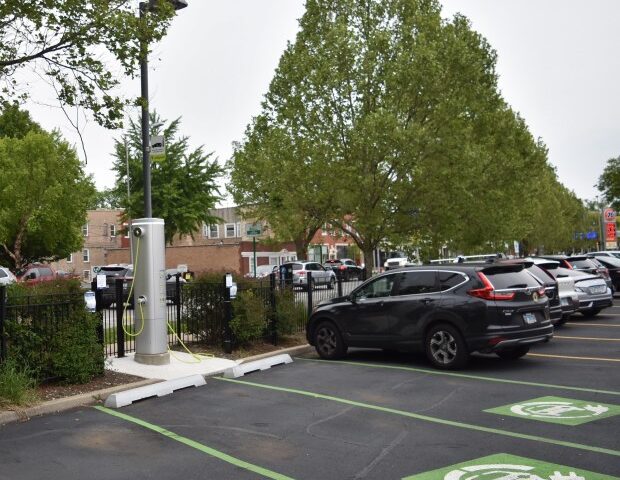Are sports simulators, pickleball courts and kombucha on tap enough to lure employees back to their cubicles?
Nope. Not according to Megan Mackinson, anyhow. And she should know. She’s the Chicago-based national lead for workplace strategy for global real estate services firm JLL. It’s her job to help building owners fill their spaces and employers create offices that best meet the needs of workers. In the wake of the pandemic, that’s no easy feat. And there’s no one-size-fits-all approach, she said.
Along the way, she’s has uncovered some interesting — and fluid — workplace trends that are quickly reshaping commercial spaces across the country. During the pandemic, for example, many offices were used primarily for collaboration and culture building. Now? Employee surveys show having space dedicated to “heads down” productivity has become a top priority for employees.
With office vacancy on the rise across the metro to more than 22% and companies issuing stricter return-to-office mandates, there’s a growing sense of urgency to figure out what works and what doesn’t for today’s offices.
This interview has been edited for length and clarity.
Q: Many building owners seem to be stepping up to the plate with big investments in the physical space, but are employers doing enough?
A: That’s a very tricky question. There are certainly some that have a lot of opportunity to improve what they are doing, but I think a number of organizations have heard the message that we need to put our people first, and as part of that message, have really taken it to heart to do employee surveys and engage their employees in a number of different ways to be part of establishing the future of their workplace and their policies. When they’re doing that, they are often coming up with really creative solutions.
Q: You cite an example of a law firm that came up with one of those creative solutions. What did they do?
A: They really wanted people in the office four days a week and so they said: “That’s our policy between St. Patrick’s Day and Thanksgiving when it’s colder and darker. If you need to work from home or another location, we’re going to give you that flexibility, which is something you’re also asking for, but we’re prioritizing that in-person collaboration and culture-building time during these core months.” It’s based on employee feedback, so it wasn’t just, “Let’s pull this out of a hat.” It’s “Let’s think about what employees are asking for.”
Q: You said equity can mean a lot of different things, including access to daylight for all workers. Tell me more about the “equity” needs of one of your recent clients?
A: The number one thing (employees) said they needed when they came into the office was focus space. Number two was collaboration space when they needed to meet with people.
Q: Does that mean they contemplated doing away with all the communal work spaces that were so popular pre-pandemic?
A: It was really the inverse of that. (They said) everyone is eligible for an office. Anyone can reserve a windowed office no matter where you are within the organization and the only way you get an assigned office for this company is that you had to demonstrate that you were coming into the office five days a week for a 90-day period.
Q: Aside from those new building amenities, including fitness centers and spaces aimed at making the workplace fun and healthier, is any of that enough?
A: While activities like meditation and massage and group fitness and different things can be incorporated and provided by a building, at the end of the day, it has to be more than just a fitness center and some of those activities. An employer has to be valuing their employee’s well-being and thinking beyond just the walls of that fitness center. It’s thinking about work-life balance. It’s thinking about mental health resources. It’s not just “What does the building need to offer?” but “What do the employers need to offer?” as well.
Q: So are these fancy work spaces, communal tables and other resort-style amenities really getting used and drawing workers back to the office?
A: I think they are being used and being valued … but (employers are asking), “Are we using those spaces or encouraging them to be used at the right time?” We’ve seen a shift. We’re seeing some of those support spaces and amenities evolving. More recently: child care. Not necessarily in the building, but in close proximity. There is also this focus on having easy affordable access to public transportation. There is a bigger focus on how are employees getting to the office. That has been a higher-priority topic than in the past.



